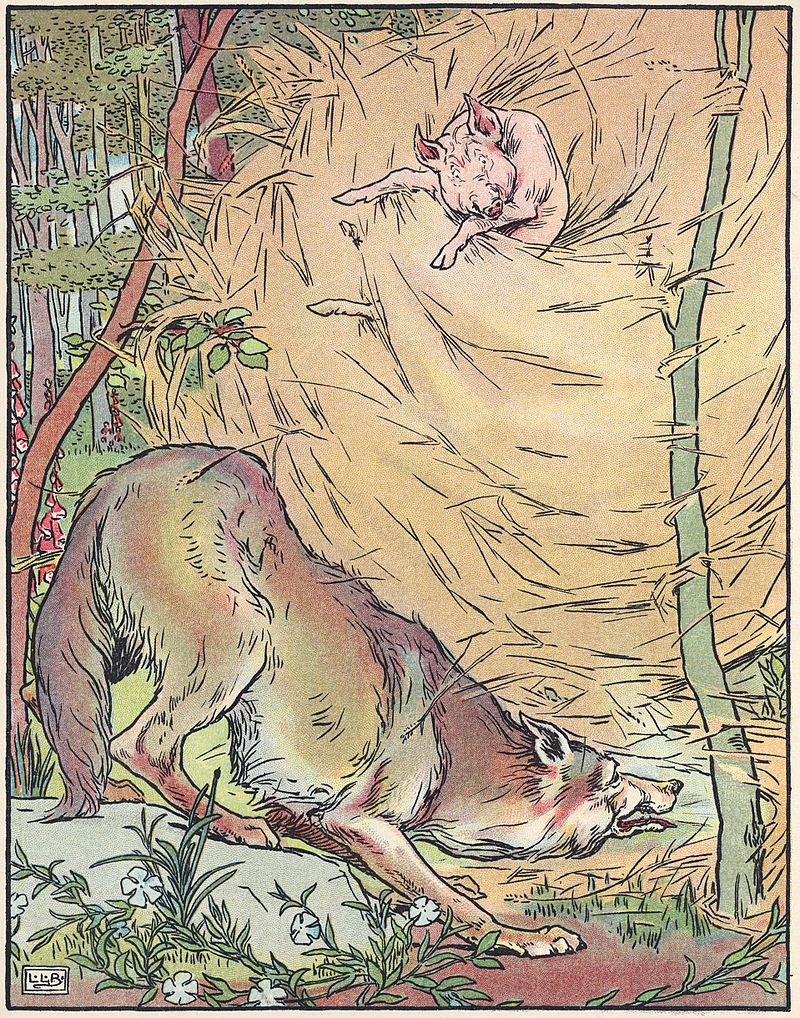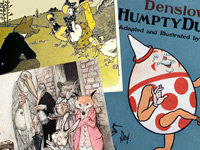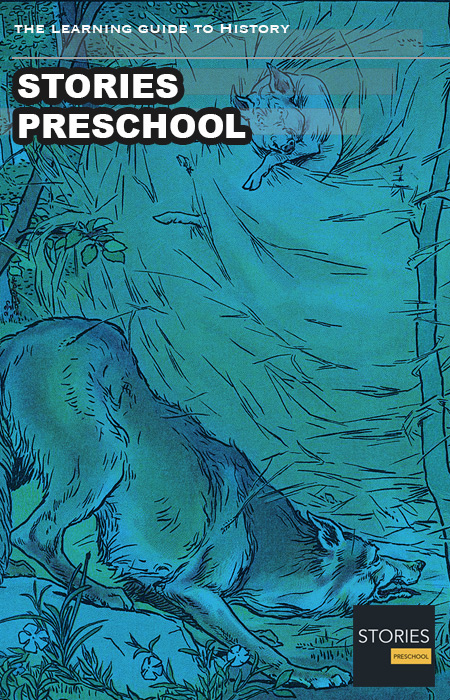The Three Little Pigs

The Three Little Pigs is a fable/fairy tale featuring anthropomorphic pigs who build three houses of different materials. A big bad wolf blows down the first two pigs' houses, made of straw and sticks respectively, but is unable to destroy the third pig's house, made of bricks. Printed versions date back to the 1840s, but the story itself is thought to be much older. The phrases used in the story, and the various morals drawn from it, have become embedded in Western culture.
It is a type 124 folktale in the Aarne–Thompson classification system.
Traditional versions
The Three Little Pigs was included in The Nursery Rhymes of England (London and New York, c.1886), by James Orchard Halliwell-Phillipps. The story in its arguably best-known form appeared in English Fairy Tales by Joseph Jacobs, first published in 1890 and crediting Halliwell as his source. The story begins with the title characters being sent out into the world by their mother, to "seek out their fortune". The first little pig builds a house of straw, but a wolf blows it down and eats him. The second pig builds a house of furze sticks, which the wolf also blows down and eats him. Each exchange between wolf and pig features ringing proverbial phrases, namely:
"Little pig, little Pig, let me come in."
"No, no, not by the hair on my chinny chin chin."
"Then I'll huff, and I'll puff, and I'll blow your house in."
The third pig builds a house of bricks. The wolf fails to blow down the house. He then attempts to trick the pig out of the house by asking to meet him at various places, but he is outwitted each time. Finally, the wolf resolves to come down the chimney, whereupon the pig catches the wolf in a cauldron of boiling water, slams the lid on, then cooks and eats him. In another version the first and second little pigs run to their brother's house and after the wolf goes down the chimney he runs away and never goes back to eat the three little pigs, who all survive.
The story uses the literary rule of three, expressed in this case as a "contrasting three", as the third pig's brick house turns out to be the only one which is adequate to withstand the wolf.
Variations of the tale appeared in Uncle Remus: His Songs and Sayings in 1881. The story also made an appearance in Nights with Uncle Remus in 1883, both by Joel Chandler Harris, in which the pigs were replaced by Brer Rabbit. Andrew Lang included it in The Green Fairy Book, published in 1892, but did not cite his source. In contrast to Jacobs's version, which left the pigs nameless, Lang's retelling cast the pigs as Browny, Whitey, and Blacky. It also set itself apart by exploring each pig's character and detailing interaction between them. The antagonist of this version is a fox, not a wolf. The pigs' houses are made either of mud, cabbage, or brick. Blacky, the third pig, rescues his brother and sister from the fox's den after the fox has been defeated.
LITERATURE FAIRY TALES

The wolf blows down the straw house in a 1904 adaptation of the fairy tale Three Little Pigs

The wolf blows down the straw house in a 1904 adaptation of the fairy tale Three Little Pigs
( Click image to enlarge)
A fairy tale is a type of short story that typically features folkloric fantasy characters, such as dwarves, elves, fairies, giants, gnomes, goblins, mermaids, trolls, or witches, and usually magic or enchantments. Fairy tales may be distinguished from other folk narratives such as legends (which generally involve belief in the veracity of the events described) and explicitly moral tales, including beast fables. The term is mainly used for stories with origins in European tradition and, at least in recent centuries, mostly relates to children's literature.
Read More » List of Fairy tales »
RESOURCES
This article uses material from the Wikipedia articles "List of fairy tales", "Fairy tale" and "The Three Little Pigs", which is released under the Creative Commons Attribution-Share-Alike License 3.0.
© Stories Preschool. All Rights Reserved.






